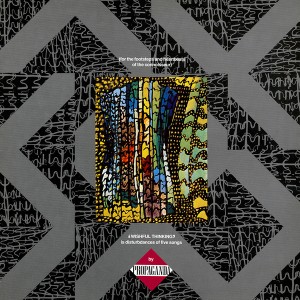 A major trope of ’80s or ’80s-set films, books and plays was the bonkers – or, at the very least, morally unsound – banker, broker or trader.
A major trope of ’80s or ’80s-set films, books and plays was the bonkers – or, at the very least, morally unsound – banker, broker or trader.
‘Wall Street’, ‘American Psycho’, ‘9 1/2 Weeks’, ‘Glengarry Glen Ross’, ‘Bonfire Of The Vanities’, ‘The Wolf Of Wall Street’. But in Jon Jost’s movie ‘All The Vermeers In New York’, actor Stephen Lack, best known for his unique performance in David Cronenberg’s cult classic ‘Scanners’, delivered a nuanced, highly original take on the character.
His middle-aged broker Mark is lonely, strange, poetic, neurotic and in possession of a serious death wish. He’s kind of a Zen Patrick Bateman, without the serial killing. So it’s just his bad luck when he becomes obsessed with French acting student Anna (Emmanuelle Chalet), whom he believes looks just like the woman in Vermeer’s painting ‘Study Of A Young Girl’.

Stephen Lack in ‘All The Vermeers In New York’
The film – which I managed to record onto VHS during its one and only showing on Channel Four in the mid-1990s – is kind of ‘Eyes Wide Shut’ meets Mike Leigh, a classic New York art-house movie with its quiet bars, art galleries (Mark finds Anna in the Met, in a scene reminiscent of Brian De Palma’s ‘Dressed To Kill’) and plush interiors, but one that also relies on ‘naturalistic’ performances and mostly improvised dialogue.
Jon English’s avant-jazz score is also superb, with more than a hint of Charles Mingus about it. ‘All The Vermeers In New York’ is also weirdly au courant, about the commodification of art and sex, and the all-powerful money-mind.
We only see fragments of the characters’ troubled, conflicted lives – the teenager who worries about the unethical companies her rich daddy is putting her name to, the heroin-addicted artist refused money by his gallery-owning friend, Mark wearily intoning about his lonely apartment looking out on a building that could be ‘street-level Europe’.
Roger Ebert gave ‘All The Vermeers In New York’ a decent review on its release. To some, the film will seem like pretentious twaddle, to others a refreshing voyage into a dream world à la ‘Blow Up’, ‘Dead Ringers’, ‘The Music Of Chance’. I revisit it about every three years and take something new from it each time.
Director Jost seems to have a very sketchy rep, described online variously as an indie movie pioneer and pretentious waste of space. Yes, ‘All The Vermeers In New York’ probably belongs in an art gallery rather than a movie theatre, but it’s still a fascinating ride.




 My Steve Martin ‘thing’ probably peaked around 1989.
My Steve Martin ‘thing’ probably peaked around 1989.  The citizens of Punxsutawney have the groundhog to tell them whether there’ll be an early spring (much to Phil Connors’ disgust).
The citizens of Punxsutawney have the groundhog to tell them whether there’ll be an early spring (much to Phil Connors’ disgust).